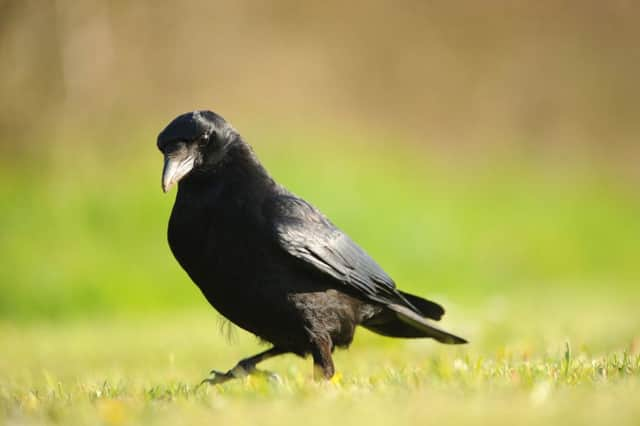JENNY SIMPSON: The difference between crows and ravens


The three all-black birds from the corvid family often cause an ID challenge.
But they and their cousins can be identified by their size, shape and calls.
Here’s the Wildlife Trust’s guide to telling them apart.
Advertisement
Hide AdAdvertisement
Hide Adn The corvid family includes the crow, raven, rook, jackdaw, jay and magpie, some of which are among our most widespread and successful bird species.
Some corvids such as carrion crows and jackdaws are very adaptable and can occupy a range of habitats, whereas jays and rooks are woodland and grassland specialists.
Many corvids are territorial and communal roosters, sometimes gathering in their thousands.
Corvids tend to have strong social groups and communities.
Crows, for example, often mate for life and are cooperative breeders, meaning other adults in the family help with rearing offspring.
Advertisement
Hide AdAdvertisement
Hide AdCorvids are considered among the most intelligent of birds, with magpies having demonstrated self-awareness in mirror tests, and crows and rooks showing their ability making and using simple tools.
n Magpies are noisy chattering birds with a harsh, cackling call.
They are excellent scavengers, predators and pest-controllers and feed on carrion, invertebrates, chicks and eggs.
Magpies have a long tail, black plumage with a white belly and white patches on the shoulders and wings.
Advertisement
Hide AdAdvertisement
Hide AdThe tail shows a green gloss and the wing feathers display a purple or blue iridescent sheen.
n Carrion crows are scavengers by nature and seek out carrion, as their name suggests.
They also eat insects, earthworms, small mammals, amphibians, food scraps and are known to steal eggs.
Carrion crows can have tidy black plumage, black bill, square tail and hoarse caw sound, usually repeated three times.
Advertisement
Hide AdAdvertisement
Hide Adn Rooks are often seen together in groups in their rookeries and can be identified from the feathery trousers on their legs.
The male courts the female with a display of strutting, bowing and cawing; once they mate, between three and five eggs are laid.
Rooks differ from crows by a pale, straighter bill with a bare grey bill base.
Ravens are much larger – a similar size to buzzards.
Most birds pair for life. Males perform breeding displays of posturing, preening and bill caressing, and females lay four to six blue-green eggs in a nest of twigs and moss.
Their plumage is black and they have a strong, heavy bill and throat feathers.
Go to hiwwt.org.uk.
Jenny Simpson is from Hampshire and Isle of Wight Wildlife Trust